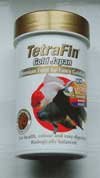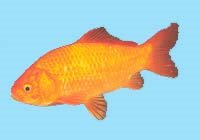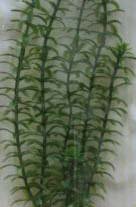Goldfish have a mainly vegetarian diet in nature - typically plants and algae, with the occasional insects. They do not eat much animal protein. So when you buy food for your goldfish make sure that the primary ingredient is of vegetarian origin and not animal protein such as shrimp or fish meal.
Do not feed goldfish on a diet of high animal protein - this causes them to become constipated. When constipated they may float upside down, float with their tail up, or generally lose their equilibium swimming in an unbalanced manner. If your goldfish are constipated, stop feeding for a day or two (if serious then 3 days), then feed only peas for the next 2-3 days. Peas are something of a laxative for goldfish.
I feed staples Tetrafin Gold Japan sinking pellets in the evening,

and Nutrafin Max Spirulina Algae tablets for Tropical freshwater fish in the morning which has the added benefit of being able to be stuck on the side of the Biorb so the goldfishies can easily find it.

I occasionally supplement with frozen green peas, 1 per fish, microwaved in some water for 10-15 seconds, allowed to cool then shelled and broken into fish-bite sized pieces. Finally I always keep Elodea in my Biorb for my fishies to munch on for extra roughage, and the nitrates in my Biorb result in good conditions for algae with my 8-10 hour light settings. Algae and Elodea plant growth also keeps nitrate levels down. Not that there's that much algae around with the fish constantly grazing on them.
It is good practice to soak the Tetrafin pellets for 2 mins before giving to the fish, otherwise the food may get compacted in the fish intestine and cause constipation.
I've heard these are also good but unfortunately not available in the UK:
Progold. Though
Fish Sempai do sell and ship in large quantities to UK. Aquadine do a good
Duraflake Spirulina flake.
This is what Aquadine's website say about Spirulina:
"It will improve the intestinal flora of your fish thereby making them more resistant to bacterial infection. It has natural pigments (Carotenoids, Chlorophyll and Phuycocyanin) to make sure that all the colors of your fish stay bright and vibrant. Spirulina also stimulates production of enzymes that transport fats within the body. This allows your fish to convert fat into PFV (physiological fuel value) or growth rather than flab. The appearance of both fins and skin will often improve with the introduction of Spirulina Duraflakes, and it often enhances successful breeding."
Flakes also need to be soaked before being given to goldfish, otherwise since they initially float on the surface the fish will swallow air when eating them and cause air to be trapped in their tummies, resulting in bloatedness and equilibrium problems.
My goldfish also like the occasional frozen sweetcorn - prepared in the same way as the peas.
I haven't yet tried these but blanched spinach, insect larvae, chopped earthworms, nori seaweed and bits of hard-boiled eggs are also apparently good supplemental treats.
Feed only once or maximum twice a day, each time about as much volume of food as the size of their eyes, which is the size of their stomach, or as much as your fish can eat in 2 mins.
The main thing is to not overfeed. Sometimes you can let them go without food for a day once a week, and if you are away on holiday for a weekend or a week, it's best to just not give them any food rather than risk the water getting dirty. This is when the Elodea and the resident-growing algae come in handy for the fish to feed on.










